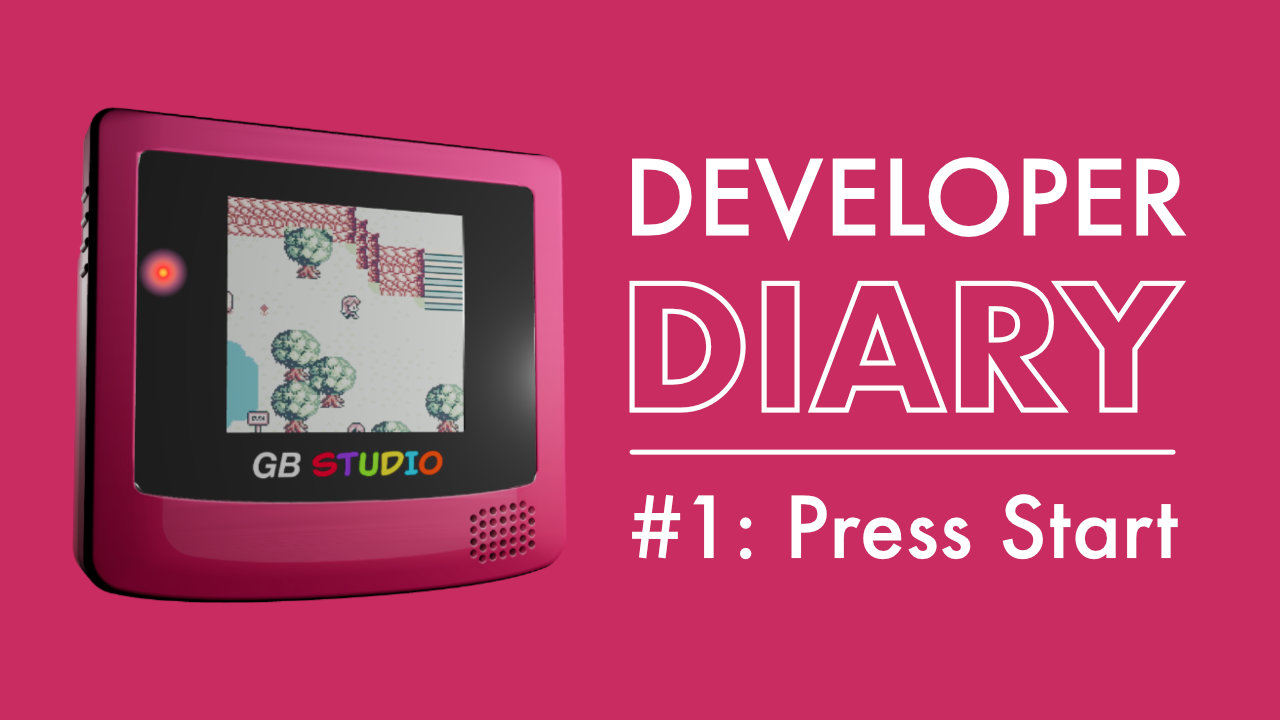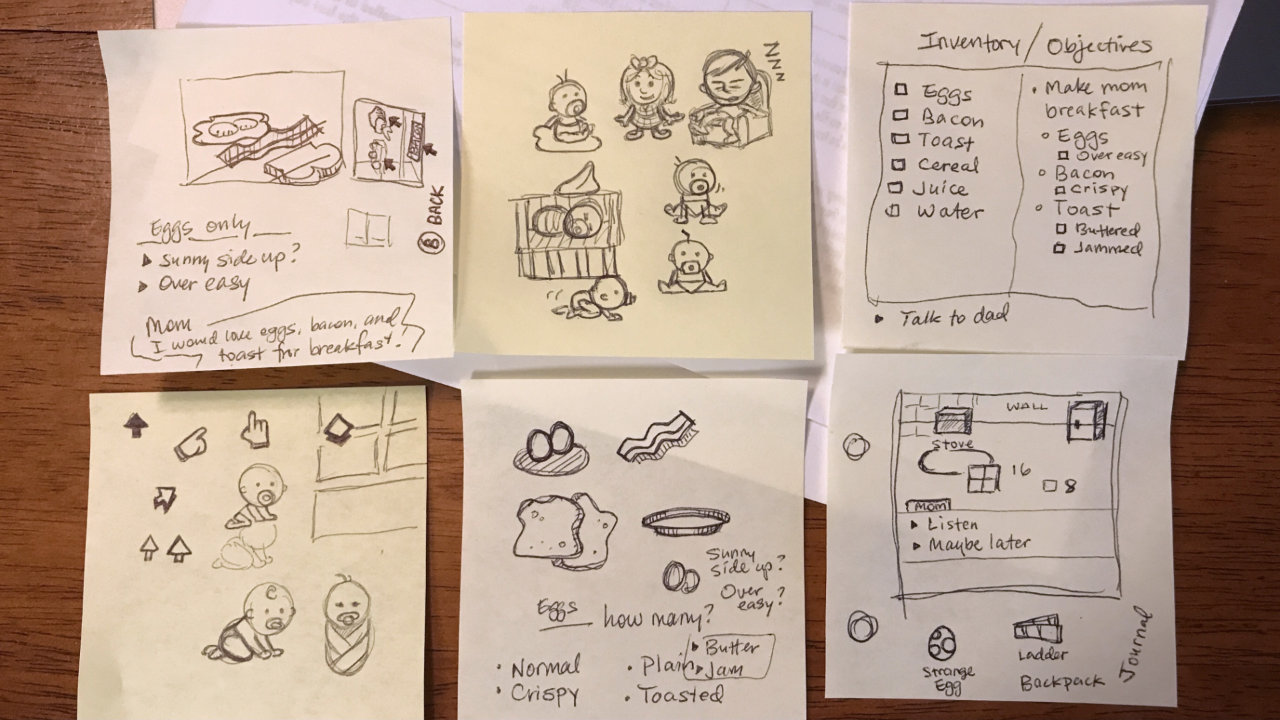
Developer Diary #1: Press Start
Diary is a funny word. My eyes often mistake it for dairy, causing my nostrils to flinch. If you’ve ever smelled sour milk, you know what I mean. Journal is a word I much prefer over diary. But alas, “developer journal” is not alliterative. For this reason alone, “developer diary” wins out.
The platform
I’m currently developing a video game for the original Game Boy. Yes, the Game Boy! Nintendo’s humble handheld struck a chord with me as it did for so many kids. The Game Boy Pocket was my first, followed quickly by the Game Boy Color.
Although I denied it, the monochrome screen of the Pocket was difficult to see at the best of times. I had to cozy up to a bright lamp and hold the Pocket to my nose if I had any hopes of playing it. The setup was uncomfortable but intimate, endearing the system to me. And the games! Oh, the games.
The games
Pokémon Red filled a whole summer. Collecting critters and exploring the Kantō region was a blast. The Legend of Zelda: Link’s Awakening DX was my first Zelda game. It remains my favorite thanks to its memorable characters, odd sense of humor, and for its ability to craft a sense of mystery around Koholint Island. Final Fantasy Adventure set my imagination ablaze with its scrolling prologue that teased the Mana Tree and the mythical Mana Sword. Great stuff.
Together, these three games contributed to my desire to be a writer. They took me on epic adventures despite running on withered technology. They were charming, rewarding, and surprising. They proved that, in competent hands, the Game Boy could accomplish wonders.
The software
So, I’m using GB Studio for my game because it’s free and requires no coding. Coding is foreign to me. My experience as a web designer begins with HTML and ends with CSS. I only succeeded in building my website using PHP because I followed (and adapted) tutorials from the remarkable Tania Rascia. I aim to do likewise with GB Studio, utilizing its drag-and-drop scripts to build something I couldn’t achieve otherwise.
Long and short-term goals
My long-term goal is to release the game on a physical cartridge if possible. In the short term, I will release it digitally. It will be a simple game because it’s my first. Developing for the Game Boy is not something I’ve dreamed about since childhood—far from it. But telling stories on the Game Boy? That’s been on my mind for decades. With GB Studio, it’s finally possible.
I want to do this firstly as a learning experience and secondly as a personal challenge. Creative expression is another reason. Profit is not. How could it be? Independent games are viable, but they’re still a bit niche. I’m essentially making a niche game for a niche market for a niche platform. Obscurity is all but guaranteed.
The game
So, what’s the game? Tentatively, it’s a blend between a point-and-click adventure and an RPG-lite puzzler… and a visual novel. Yeah, I shouldn’t try classifying it yet.
I’m still testing different scripts in GB Studio to learn what’s possible. The software may be drag-and-drop, but I need to grasp the underlying coding concepts. I admit, my brain struggles with this kind of thing. The bulk of what I’ve tinkered with hinges on true/false statements with a handful of variables. These are easy to follow when they’re isolated, but once you start nesting them? Somebody get me an aspirin.
Out of the box, my player character can walk around and interact with specific objects. I don’t think that qualifies as gameplay by itself. When walking around begins to feel like exploration, then you have gameplay. When picking up random objects elicits laughter, builds characterization, or provides strategic insight, then you have gameplay.
The story
Reading between the pixels. That’s a phrase I jotted down when thinking about how to convey the story. Without dumping huge quantities of text into the game, how can I blend gameplay and story? The game’s main objectives will do some heavy lifting, but sentiments left unspoken can speak volumes. I hope to convey much of the story through environmental clues and bits of dialogue.
So far, the story centers on a small family in the American suburbs. The time period falls in the ’90s, though I don’t know how stringent I’ll be with that. Cell phones are probably off the table. The family will grapple with everyday issues like paying bills, going to work, and mending relationships.

The player character is a girl around the age of seven named Mollie. I want Mollie to be capable of doing various tasks on her own—she represents the player avatar, after all. But I also need her to be a little naive and prone to letting her imagination run wild. She will struggle to comprehend relational complexities and be unaware of social taboos.
I’m drawing inspiration for Mollie from my daughter Olivia. Just shy of two years old, Olivia overflows with personality. Mollie will be similar: energetic, mischievous, heartwarming—an extrovert whose need for attention boggles the mind, often resulting in naughtiness. But you will love her anyway because she is only guilty of living life to the fullest. The funny moments should tickle your soul, and the sorrows should kick you in the teeth.
That’s Olivia… er, I mean Mollie.
Show, don’t tell
This is a popular mantra among screenwriters. I want to honor it, but video games have unique considerations. They are interactive stories. Perhaps “don’t tell, do” would be more fitting.
Here’s an example: the Dad character is an inventor. It would be easy to have Mollie explain, “Dad’s an inventor.” Instead, I will probably draw some weird contraptions in the basement and cover them in tarps. Why are they covered? Because they’re not in use. They’re not in use because they don’t work. They don’t work because they’re not finished. Dad’s a dreamer who gets bored easily and bounces from project to project.
Dad could say something like, “I need to borrow the motor from the Potty Peddler. Would you grab it for me? Here’s a wrench.” Then Mollie descends into the basement with a flashlight and uncovers the Potty Peddler, which is an exercise bike built with a toilet in the seat. After Mollie retrieves the motor, the contraption collapses in a heap.
Mollie remarks, “One of dad’s earliest duds. Turns out nobody wants to break a sweat while pinching a loaf.”
Told this way, we learn of dad’s failures first-hand while also getting to explore part of the house.
What’s next?
Scripting tests. Lots of tests! My latest test involves arranging the inventory items on the menu screen. I’m devising a way for the player to pick up items in whatever order they wish, at least within a specific chapter.
For instance, if Mollie picks up eggs first, then bacon, and then toast, the player would expect to see them in that order on the inventory screen. Why all the fuss about item order? I’ll explain.
My thinking goes like this: the player should experience a sense of freedom and self-determination, even if that’s only an illusion. I want to disguise the game’s linear progression with player agency. I also want to provide multiple solutions to the same puzzle.
To that end, I’m contemplating story beats that may play out differently depending on player choices. These would be minor—an alternate cutscene or an extra bit of dialogue. Something small but interesting enough to encourage different approaches.
Replay value is a big consideration, too. How can I shape the story so that a second play-through could be just as fun? Should the gameplay receive more focus than the story? Is there a risk of the narrative overshadowing the gameplay? If so, should I write a standalone short story instead of making a game?
A quick word about alternate endings. I don’t like ’em! See? Quick.
Any alternate stuff I create will not result in major multiple endings… just minor variations. For example, Dad would’t die if the player turned on a Bunsen burner and accidentally torched the lab. Rather, Dad would simply get bandaged at the hospital as a result. Something along those lines.
OK, enough diary-ing. Diarrhea? Dangit! This is why “journal” works so much better. You can do some journaling, but you can’t do some dairying. Dairying? Great, now I’m a farmer! Thanks, auto-correct.
